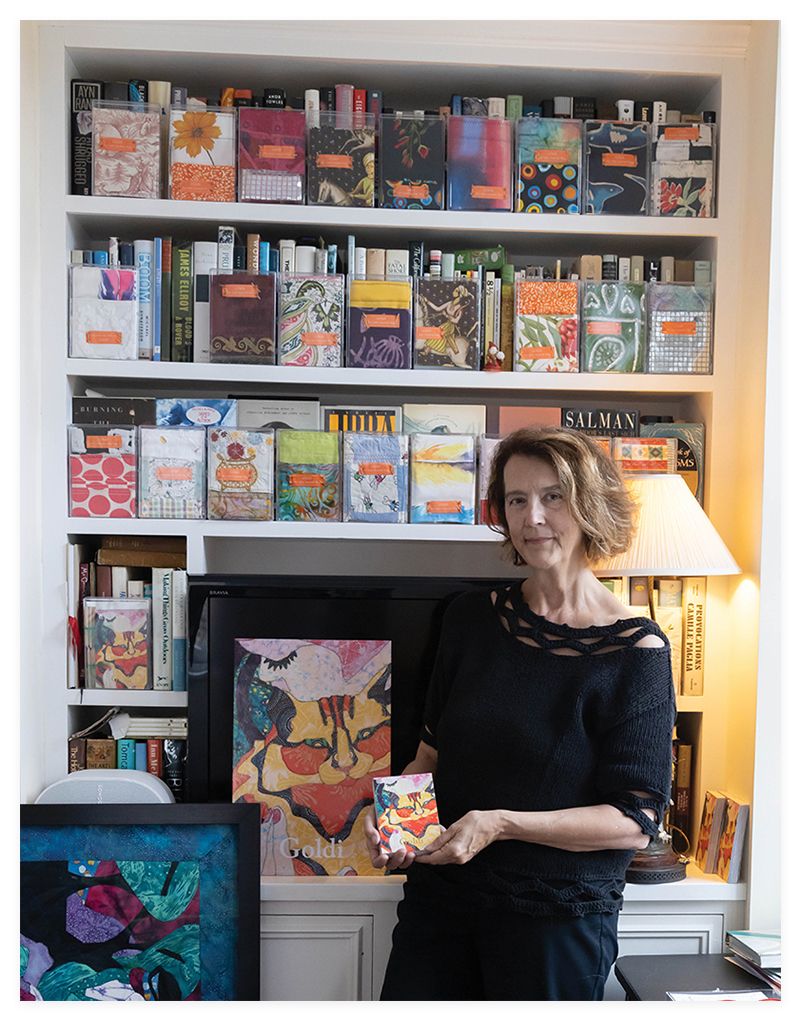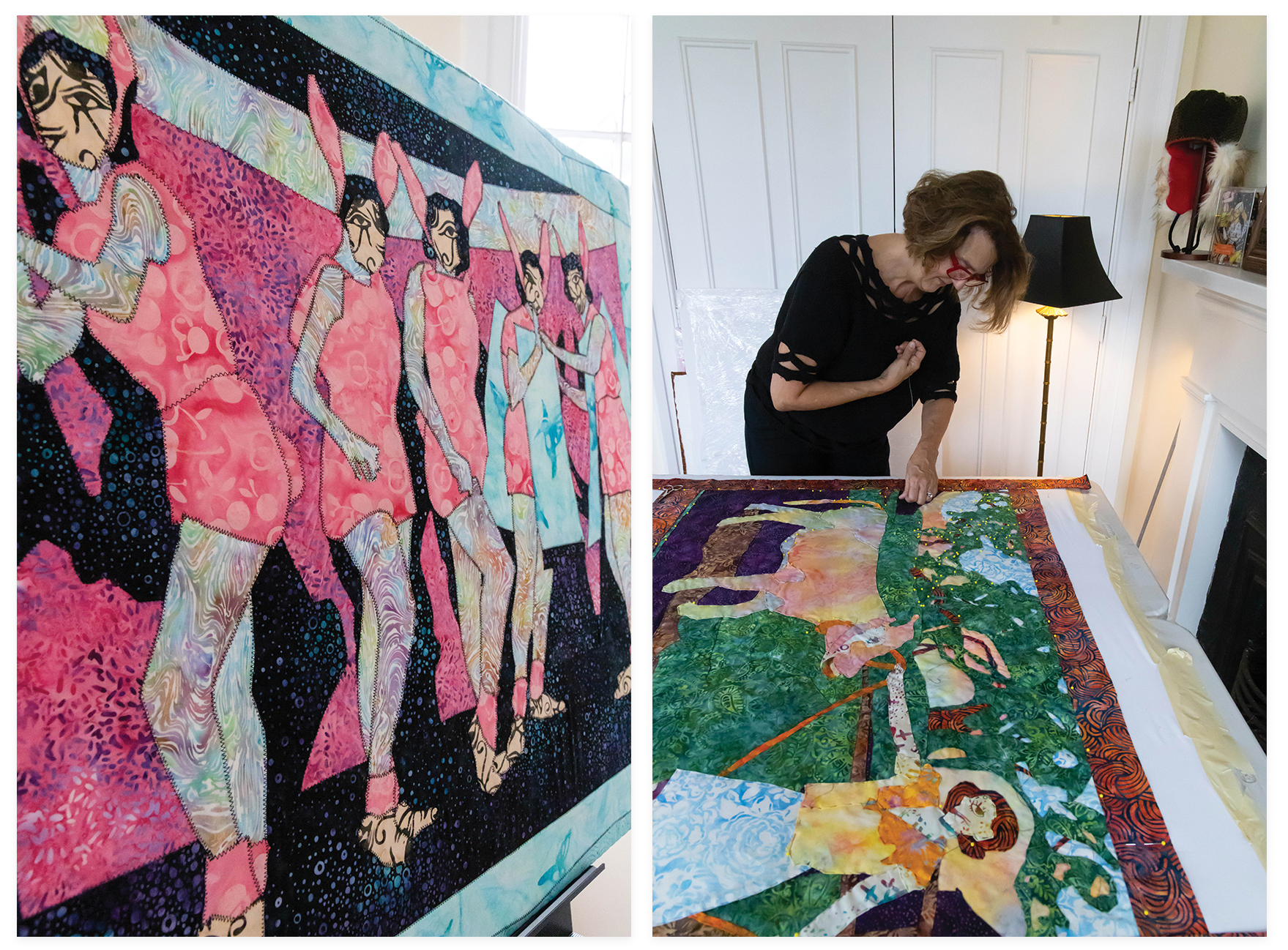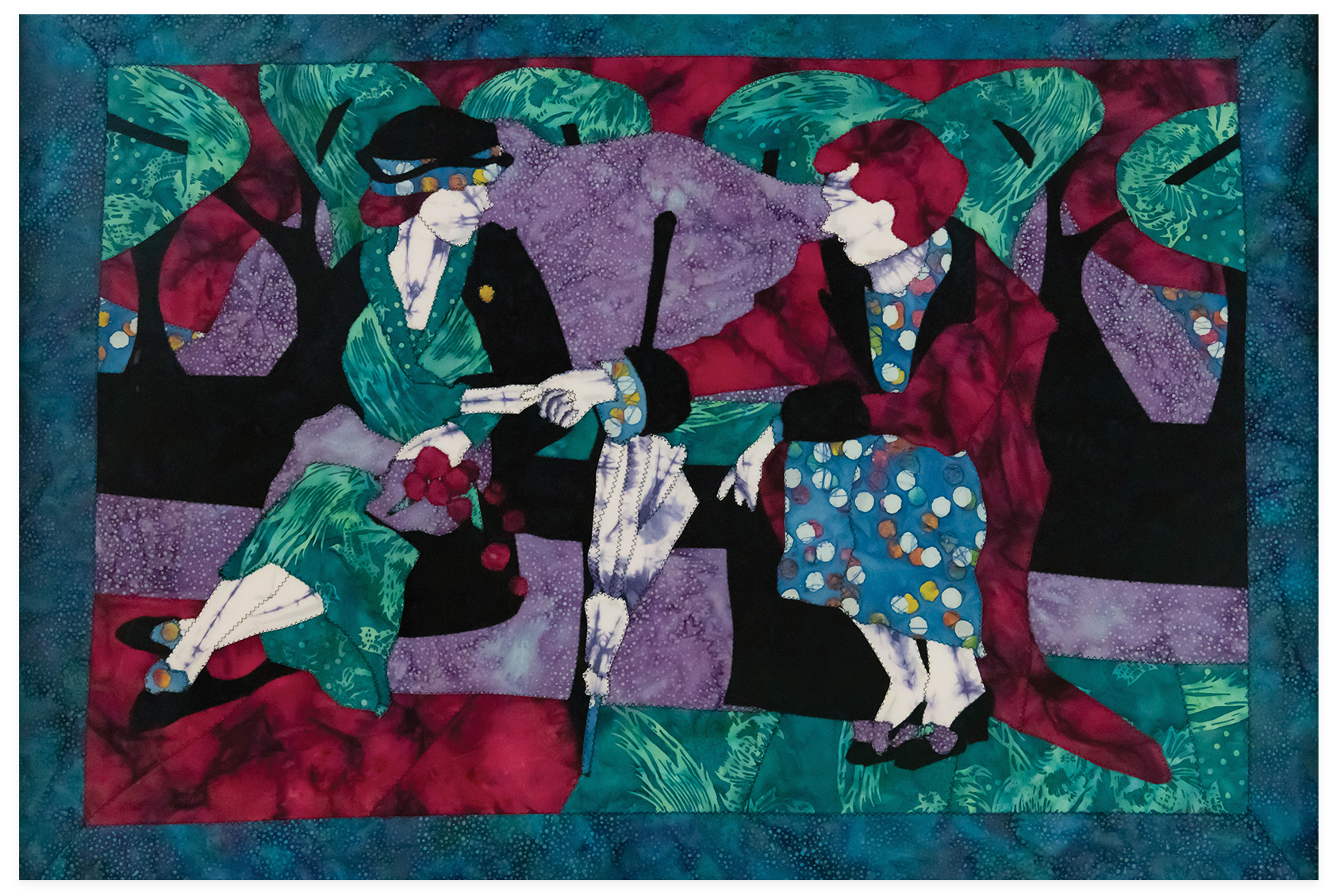See her work this month during her residency at the Gibbes Museum of Art

Artist Nicole Vanasse uses variations in textiles to create characters in her works.
In artist Nicole A. Vanasse’s composition Metamorphosis, a woman in a green dress and a fancy hat extends her hand to the woman sitting beside her wearing a polka-dot dress and a dramatic red coat. Subtle butterfly imagery surrounding the women suggests an evolution in their relationship. One of the most remarkable things about this piece and Vanasse’s others is that the details—such as the women’s mouths, eyes, and hair—are created by natural variations in the fabric.
Vanasse, who has worked in creative positions for the Peace Corps Partnership Program and C-SPAN, has been creating art full time since her father died suddenly in the early 1990s.
About three years ago, Vanasse and her husband relocated to Charleston from Maryland, where she often participated in juried shows. Late last month, she began a residency at the Gibbes Museum of Art. Here, Vanasse shares how she learned about color and balance.

(Left) Horus Girls (textile composition, 36 x 32 inches, 2024); (Right) Nicole Vanasse’s residency at the Gibbes Museum of Art continues through May 4.
Discovering Her Passion: My parents were very much influenced by the art scene in the ’50s. We were the bohemians on the street, so I was raised in an art-centric atmosphere and encouraged to do my thing. When I was 20, I walked into the local newspaper in Amherst, Massachusetts, and told them I wanted to do a series of prerevolutionary ink drawings to celebrate the Bicentennial. I still have them. As an adult, I always managed to find jobs to feed my hunger to create.
Learning to Sew: My mom taught me by example. My father had a John Hay fellowship for secondary school teachers to go to West Africa. When he passed away, Mom called and asked if I wanted all his dashikis. I took them more to comfort her than do something with them. However, at the time, I was taking a workshop with a watercolorist, and he was teaching us how to do portraits. I was working on a picture of my dad, and I wanted to know if there was a way to incorporate the image into a quilt. I was so consumed with it that I made it in seven days. It was so much fun. Then, I started looking at other family photographs and learned a lot about color and balance and how to use different fabrics together.
A Mystery: The art begins with some inspiration, like a book, an old photograph, or a piece of music. Whatever inspires me to think, “What’s happening here?” My process has evolved, but I’m very comfortable right now; I love where I am. Composing conversations between characters invites viewers to put their own stories together. A lot of what I do is whimsical; there’s an element of humor. There’s the mystery of what’s happening or a hint of nostalgia. I love snapshots from albums or things where people are engaged in something, but when I put my touch on it and do drawings first, it becomes a today piece—or is it?

Metamorphosis (textile composition, 33.5 x 31 inches, 2020)
On Her Goldi Flipbook: The genesis for Goldi was a show I was invited to be part of in West Hollywood. Someone said, “Your pieces are so lyrical, you should combine them with a story.” That stuck in my brain. The National Museum of Women in the Arts does book-as-art awards, and I pitched a children’s book around the story of Goldilocks using my art. I worked on it in my kitchen for two years. It was so transformative because I started using figures and telling a story through the 16 panels. Eventually, I made 125 books by hand. I have never exhibited those panels, but I think the universe is telling me to transform them.
The Gibbes Residency: My residency will offer visitors the opportunity to see a work in progress. I haven’t done this before. People often are intrigued that the pieces they see are made 100 percent from textiles. I don’t paint, draw, or imprint on my work—any imagery is found within the fabric.